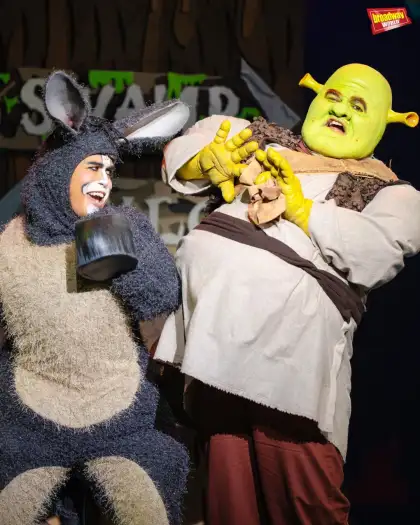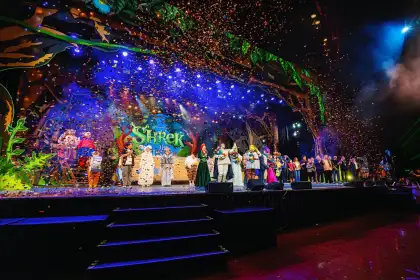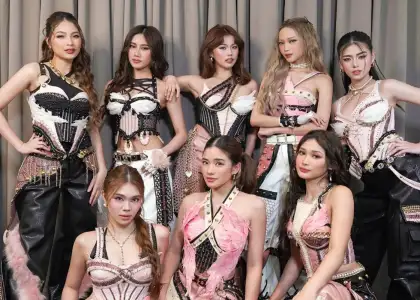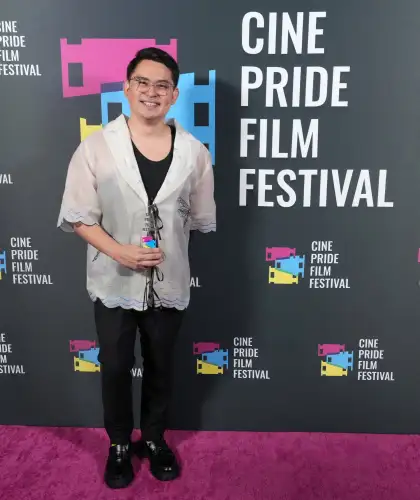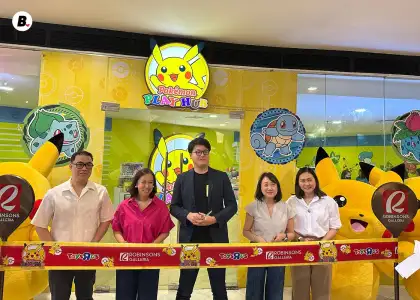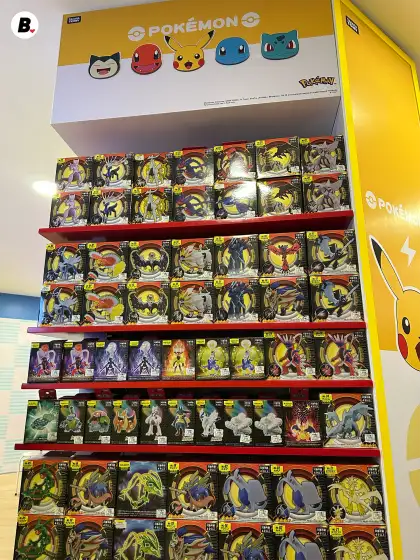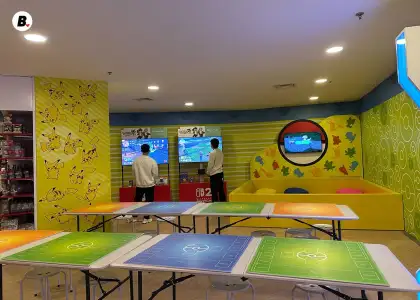Meet Happee Sy Go: Super Event Producer of K-Pop Concerts in the PH

When we think K-Pop, almost instantly powerhouse performances come to mind. Upbeat pop music partnered with colorful vocals and intense dance routines are just some of the elements that make up this iconic genre that has solidified itself as a staple in the Philippine concert scene.
But an artist can only shine its brightest when it has the right venue and the right pedestal to stand on. And with all the K-Pop concerts and fan meets that have taken place here in the Philippines, does it ever make you wonder just who is behind all the magic and how they were able to bring these impressive global acts onto the Philippine stage?
Meet Happee Sy Go, 'Chief of Happiness' at Pulp Live World and the woman behind all your favorite K-Pop events. Happee is all about delivering happiness to Filipino K-Pop and K-Drama fans, having spearheaded and organized concerts and fan meets for some of the biggest names in South Korea such as Super Junior, EXO, IU, and BTS.
The Beat Asia sat down with the K-Pop event producer to talk about all the juicy details about our beloved K-Pop idols — just kidding! But we do have something better! Learn about the process of setting up a K-Pop concert from booking the artists to opening night and discover how Happee poured her blood, sweat, and tears (BTS pun intended) into producing and organizing the most elaborate concerts and fan meet events and earned her the name “Inang Reyna ng K-Pop(Queen Mother of K-Pop)."
When Rock Met K-Pop: A Love Story
Contrary to how impressively well she does her job, Happee had not been born with the desire to produce concert events.
“I actually wanted to go down the architect route. But I got diverted while chatting with my then friend — now husband — Vernon.”
Vernon Go, president and CEO of Pulp Live World, had been an industry player in the events and concert sphere, known to have brought several world-class artists onto the Philippine stage from Aerosmith and Cindy Lauper to metal legends Slay and Megadeth. The company’s official publication, Pulp Magazine, was the leading music magazine in the country famed for its trendy features such as artist profiles, album reviews, and concert coverages.
The way music crosses borders through emotional connection, K-Pop made its way into the country because of love, specifically the love between Happee and Vernon.
“On a whim, I just told him ‘Why don’t we do K-Pop together?’ and at that time nobody knew much about it, and it was all online. I remember Vernon saying, ‘K-what?’ *laughs* I showed him Super Junior and he just wanted to book them to impress me because it’s something I like. Two weeks later, I received an email that they got them!”
And the rest, as they say, is history.
A K-Pop Production Crash Course
Happee had been over the moon about the news but was also shocked at how fast everything happened. She discovered that Super Junior’s management just squeezed Manila on their 2010 SUPER SHOW 2 tour, which gave her little time to prepare. With how much she loved the group, Happee took it upon herself to take the lead in organizing the first-ever K-Pop concert in the Philippines, despite having no background in event production.
“I was like an SM trainee,” she joked, relating her experience to the grueling training process within a South Korean entertainment company. “It was me, myself and I at that time since nobody in the company truly understood how ‘delicate’ a K-pop production is and how meticulous you need to be to properly execute what the artists and their management wanted.
“At that time, I needed people who ‘get’ what we were doing so I worked with about 10 volunteers, and with them, we did the entire show. Looking back, if I were to do a crash course in production, I would do it the same way I did that first show because it really pushed me to the maximum. It also created my mantra in life, which is ‘Go big or Go home!’”
Today, it’s clear how the experience had influenced Happee as a producer, having brought in some of the biggest names in the South Korean entertainment industry and setting stages at varying venue sizes successfully without any major hitches since 2010.
Just last December, Happee took on her biggest and most challenging event yet when the country hosted the Asia Artist Awards 2023 at the Philippine Arena. Pulp welcomed more than a thousand South Korean delegates and took care of a total of 58 artists. She told us about how the company and her team pulled through despite having limited resources and budget. On top of that, it was a live show, which gave them little to no room for any mistakes.
“We still cry about it when we talk about it in the office. *laughs* I still can’t believe we did it! It was so tiring. Logistically, it was such a nightmare. I don’t think many people realize how big that event was. It was like the K-Pop Olympics!”
She also conveyed how proud she was of her team who forged on despite the many challenges, and for being so flexible with the artists’ management demands, “Seeing how everything panned out, I think it created a stronger bond within Pulp. Everyone was a fighter and so committed. It will always be like our badge of honor for being able to pull it off.”

Armed with firsthand experience of handling a full-on K-Pop concert without prior experience, Happee felt she could take on anything. She gave us a glimpse into what happens behind the scenes and walked us through the process of organizing a K-Pop concert.
“When an artist catches my attention, I immediately check if they’ll be on tour. I then contact the management. Sometimes, it’s the other way around. After that, we start aligning our dates, venues, and ticket prices, which takes some time.”
When asked about some fans’ violent reactions to high ticket prices, Happee reasoned, “Everything is connected and calculated on the management side. It’s not really our call, but the tour’s. If the tour is meant to be big, then the fee is commensurate with that. It’s all balanced.”
After everything has been agreed to, only then do they start planning the production, which includes contacting suppliers and collaborating with fan clubs. But through it all, one thing seemed to be a constant.
“Every step of the way in the process requires approval from the artists’ management. So, every approach is customized to each artist. We submit a marketing plan to them and once that’s all approved only then can we announce the show to the public.”
She also stressed that although there’s a lot of planning in post-production, last-minute changes could not be avoided. Being quick on your feet and being able to solve issues efficiently is something the event producer knows how to do best.
“My dream production is to have my own ‘Happy Place’ where I call all the shots,” Happee added wistfully. With how determined she is to give us the most spectacular K-Pop concerts, we believe anything is possible!
A Super Show requires a Super Producer
When asked about the most important skill one needs to have as a K-pop concert producer, Happee answered: “Being amenable to changes. With K-Pop shows, you must be attentive to details. I’m very OC (obsessive-compulsive) which works in my line of work. You really have to be flexible.”
Happee explained the cultural divide in K-Pop shows, how important it is to find compromise when negotiating with the artists’ management, and how it’s usually her side that has to “bend” to their wishes. She also emphasized that passion for the project is crucial in creating the best show.
“At the end of the day, you have to love the genre. You have to love the fans and the community to produce a good show.”
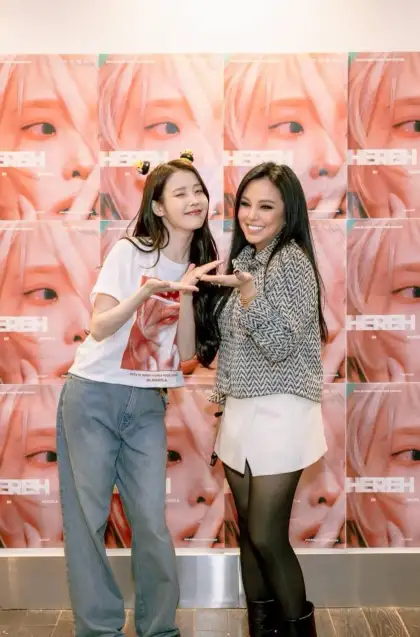
Happee has been known across the K-Pop community as the bridge to their favorite Hallyu idols and is famous for having a close relationship with fans online. This was especially reflected in the way she answered our question on her greatest challenge:
“It’s balancing the rules of the artist’s management with what I want to give to the fans, because I’m the type who really listens to them.”
She further explained that although she wants to amplify certain experiences, she has to consider the artist and management and what they think about her ideas.
“I mean, if we’re already doing it (the show) why don’t we go all out? Why do I need to gatekeep something that’s already here? Let’s just enjoy it! But that’s just me. It’s not my call. I have to stop myself from being so extra, which is a lot of times. *laughs* I wholly respect the management and the artists. I think that also comes from being an artist myself before, so I know how they feel. It’s really a balancing act for me.”
When asked about the most rewarding part of her job, Happee didn’t hesitate when she replied, “In the shows, I’m always standing among the fans because I love seeing their reactions. Witnessing that single moment when the fan and artist finally meet and seeing the show I put so much effort into coming together… It’s beyond words. I can never exchange that feeling and I still experience it every single show, no matter how long I’ve been doing it.”
On K-Pop Productions Being More than a Business
With the success of K-Pop concerts not just in the Philippines but beyond, it’s safe to say that the genre is no longer a regional phenomenon, but a global cultural force backed up by millions of fans of various ethnicities and ages.
When asked if this has affected her work as a producer or if she had ever felt pressure when producing massive shows compared to smaller productions in the past, Happee confidently stated, “People do expect it to be bigger, but I don’t think of it that way because it might be the reason it would die. I don’t want to ‘up’ it.”
She conveyed her conviction on keeping artists ‘alive’ and thriving. “I don’t care if the artist comes back every year to perform at a smaller venue. What matters is that they are surviving, and that people are still watching. In all the shows that we do, we plan it according to how I know that value of the artist is and what we know the market can handle.”

When asked about how she elevated the K-Pop experience, Happee explained how planning the fun starts from her personal preferences as she considers herself a reflection of the fans. She also revealed that with the current demand for K-Pop events, it’s important to guarantee a safe space for everybody, which led her to assign two separate security groups: one for the artist and the other for the fans.
She also listed some of the finer details that almost go unnoticed but are in fact purposefully planned by producers to secure concertgoers, like providing more seating or putting a maximum capacity within standing areas.
“As a fan, if I don’t want to be there, I’m not going to put you there. I’m already the most ‘maarte (picky or high maintenance)' of the fans so I think I would know what a normal fan would want.”
From starting their own ticketing company to avoid scalpers to personally placing rubber mats on outdoor concert grounds to keep the fans from slipping, Happee makes sure that the fans’ experience is well thought off. It’s most likely why a lot of Filipino K-Pop fans adore the event producer, and even gave her an endearing title, “Inang (Mother)," which reflects how much they trust her in welcoming, managing, and taking care of their beloved idols.

Pulp Live World recently produced IU’s HEREH World Tour Concert in Manila last June 1 at the Philippine Arena as well as ENHYPEN’s ‘Fate’ World Tour earlier this year at the New City Clark Stadium.
This August 3, Pulp is bringing South Korean actress Kim Ji Won to Manila for the first time for her "Be My One" Fan Meet Tour (find out the deets here!) and is gearing up for ZEROBASEONE’s The First Tour [Timeless World] at SM MOA Arena on October 12.
Get to know Happee Sy Go by following her here, and don’t miss the latest K-Pop concerts and fan meet events by staying tuned on Pulp Live World’s Facebook.
Get the latest curated content with The Beat Asia's newsletters. Sign up now for a weekly dose of the best stories, events, and deals delivered straight to your inbox. Don't miss out! Click here to subscribe.



















